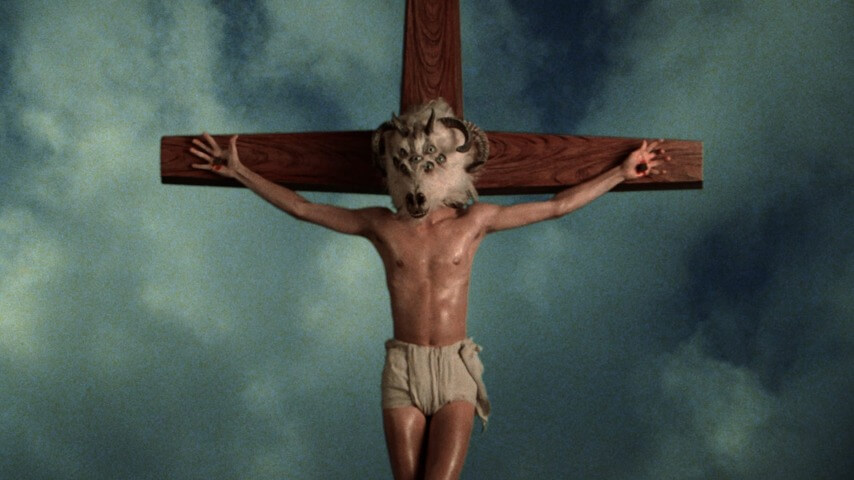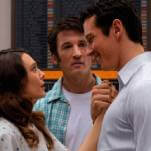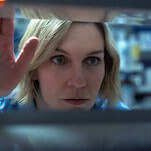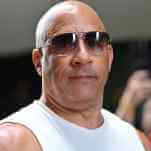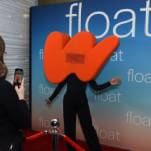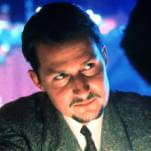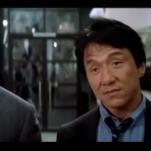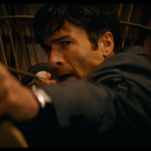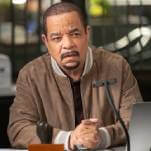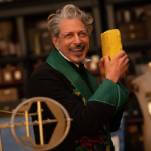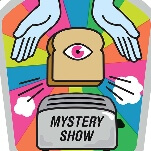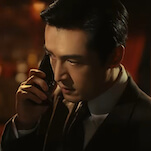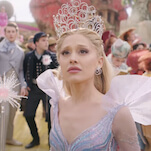In Cult Of Criterion, The A.V. Club highlights a new release from The Criterion Collection each month, examining the films entering an increasingly accessible film canon.
When I started this column a year ago, I wanted to follow in the footsteps of some of my A.V. Club predecessors who helped highlight smaller, odder films that deserve to be remembered by those dipping their toes into cinephilia. At the same time, the series is an acknowledgement of The Criterion Collection (and its streaming service The Criterion Channel) as a modern establishment, one with the same kind of inviting, taken-with-a-grain-of-salt curation as some of the form’s long-standing guide texts—the Sight & Sound polls or 1001 Movies You Must See Before You Die or Roger Ebert’s Great Movies or A Personal Journey With Martin Scorsese Through American Movies—and the same kind of surprising strangeness you might once have found browsing a video store’s shelves, steered solely by vibes. Those films that split the difference between the canonized and the cuckoo are special. One of them, Masahiro Shinoda’s Demon Pond, kicked off Cult Of Criterion last October. Now another, Ken Russell’s Altered States, rings in its anniversary.
At first blush, the British oddball’s first Hollywood film offers a wealth of respectable bonafides. William Hurt plays the lead in his debut role, fresh from the post-Juilliard stage. Paddy Chayefsky, one of the few screenwriters some people actually know by name, adapted his own novel for the script (before taking his name off the project). John Corigliano, who had just won a Guggenheim fellowship, was nominated for an Oscar for his first film score. Warner Bros. put the film out into theaters on Christmas. And yet, thanks to Russell—whose baroque work includes The Devils and The Lair Of The White Worm—it’s all in service of a complete head trip, a seriously unserious turn-of-the-’80s reckoning with the countercultural self-experimentation of psychonauts like John C. Lilly.
This contradiction is echoed in the text of the film: A tenured Harvard psychopathologist’s woo-woo tendencies are brushed off by those who can’t help but acknowledge his brilliance. For every blistering diatribe about truth and God, sometimes in the middle of a sex scene, there is a ridiculously brash image that pierces its academic veneer, like a seven-eyed goat Christ or a trippy tea-time. As the professor finds himself drawn again and again towards hallucinating in a sensory deprivation tank, his mind—and, eventually, body—unravels away from his colleagues and loved ones.
The subsequent sci-fi body horror, courtesy of makeup wizard Dick Smith and Chayefsky’s earnest script, is a bit like Russell doing David Cronenberg. Released just one month before Scanners, Altered States is similarly devoted to dry, institutional dweebs justifying their doomed, id-driven experiments with endless jargon until the façade bursts and wet, goopy truth breaks free.
But even removed from the era-specific observations around trendy, intellectualized drug use, Altered States contains unflattering universal truths. One doesn’t have to be well-versed in the history of psilocybin—appropriated in America after a couple enthusiasts convinced an Indigenous Mexican shaman to let them participate in a traditional religious ceremony, then blew up her spot in Life magazine—to appreciate the plot points and arcs typical to white guys with no real problems ruining their lives.
The passions of Eddie Jessup (Hurt) are balanced by two excellent colleagues—Bob Balaban as his moony tripsitter and Charles Haid as his frustrated Southern naysayer—and his hyper-rational anthropologist wife (Blair Brown), all sticking by his side despite his diminishing grasp on reality. Decades later, the film evokes the contemporary, myopic, smug self-assurance of alternative medicine types, of supplement grifters, of ayahuasca ceremonies turned into tourist traps. In Altered States‘ Eddie, one sees a familiar kind of man: A man fleeing the world in front of him, and, to save his ego, reframing this retreat as a pursuit, one of a greater wisdom that exists outside of convention. This is Aaron Rodgers if he took so many drugs that he monkeyfied himself.
Yes, Eddie’s physical reversion into a more primate-like form is just one ridiculous element of a film that takes what initially seems like a one-sided, Prince Of Darkness-like battle between science and religion, and turns it into a silly-sweet episode of The X-Files where a goofy creature runs amok and love saves the day. It’s also not the only nutty prosthetic Smith crafts for Altered States. In any given frame, Eddie could look totally normal, like a Geico caveman, or like the worm-headed Bib Fortuna from Star Wars (you know, the guy who’s coworkers with Salacious Crumb).
These are just the most physical ways that Russell manifests the hopes and fears of a generation of mind-expanders. In garish montages, Russell sticks his protagonist in a Peter Gabriel music video, obliterates his body like one of Pompeii’s ash-frozen corpses, and torments him with silent-movie visions of epic religious horrors. More abstract are the colorful explosions that resemble both stars and cells, vibrating with the fervor of French documentarian Jean Painlevé.
This description may lead one to believe that Altered States is a movie that naturally welcomes a high viewing experience. But I cannot emphasize enough how little this movie made me want to do drugs. Russell’s film is a series of bad trips burned from the brain onto celluloid—it is a panicky, out-of-control, irrational subconscious attacking the thinking brain in every frame. These are the just deserts earned by Eddie’s ravenous, avoidant appetite for discovery.
What really matters for Eddie, in the end, is what he’s been running from all along: His family, his friends, and simple human love. It’s completely cheesy, or at least it would be if not for the vital, personal danger injected into this lesson by Russell and Chayefsky. This collision between two opposing auteurs (who, by all accounts, despised each other) still boasted a shared villain, normalcy, that it fought with a shared weapon, professional obsession. Altered States‘ conclusion, sincere and relatable compared to the heightened mania leading up to it, is one of acceptance. As bizarre as the film gets, and as outré as its filmmaker and main character like to think of themselves as, the undeniable revelation sought by its fringe-dweller is the same as the one found in hackneyed romances—sometimes you just need to turn yourself into the universe’s throbbing fetus before you realize that we find our answers in each other.
